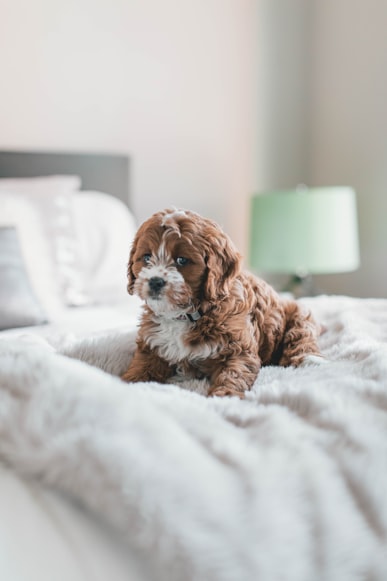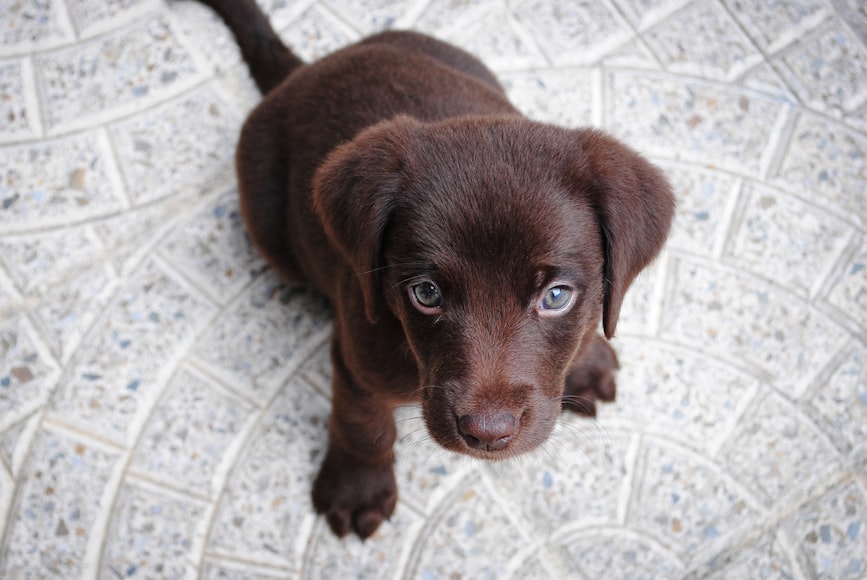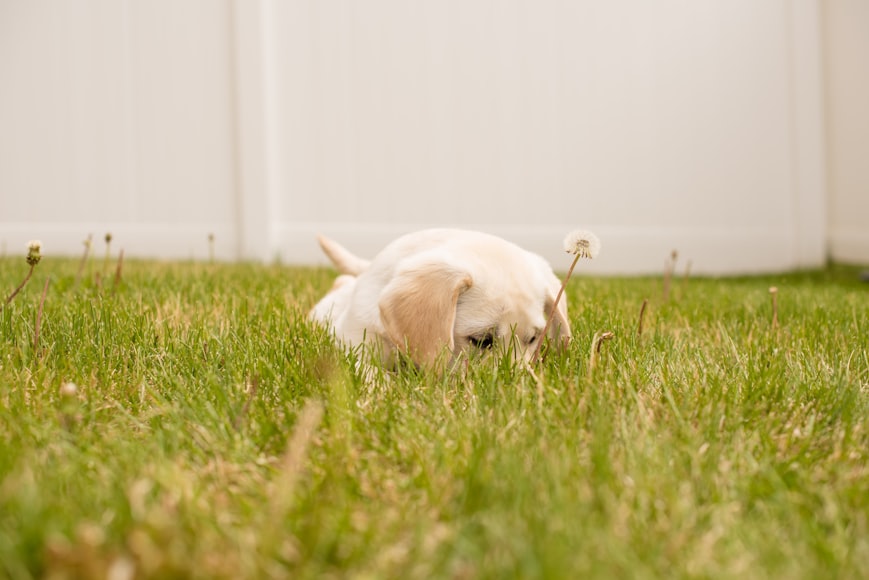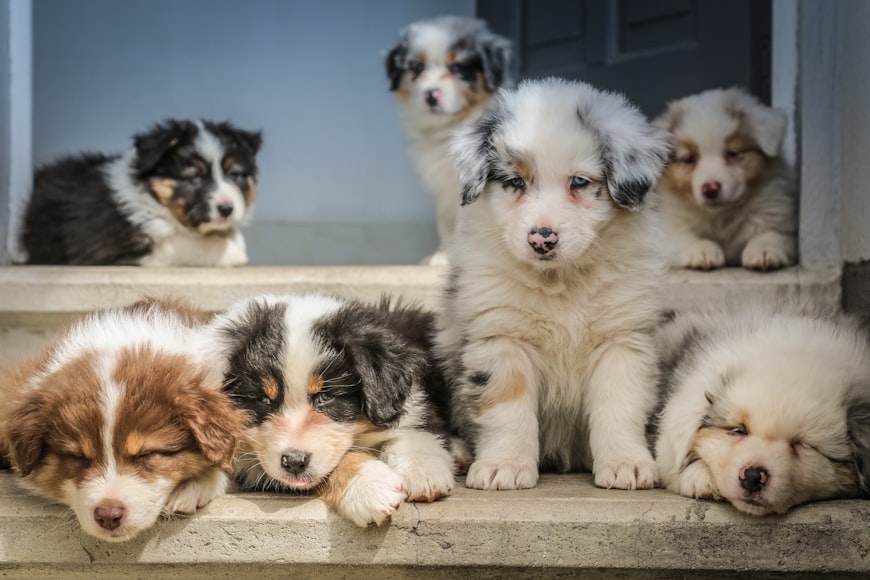Puppy Crate Training Outline

Introduction
- Importance of crate training for a puppy’s well-being and behavior
- Benefits of crate training (potty training, socialization, reduced anxiety)
Choosing the Right Crate
- Size: Puppy should be able to stand up, turn around, and lie down comfortably
- Material: Consider wire, plastic, or fabric crates based on durability and ventilation
- Features: Look for crates with doors that can be locked securely, removable trays for easy cleaning
Preparing the Crate
- Create a cozy environment with a comfortable bed or blanket
- Add calming scents like lavender or chamomile
- Place a favorite toy or chew inside to encourage positive associations
Step-by-Step Training
1. Introduce the Crate Gradually:
- Let the puppy explore the crate outside the door.
- Place treats or food inside to make it a positive space.
- Gradually increase the time the puppy spends in the crate with the door open.
2. Start Short Crate Stays:
- Begin with a few minutes at a time, gradually increasing the duration.
- Stay close to the crate and offer treats or praise when the puppy is calm.
3. Establish a Routine:
- Designate specific times for the puppy to be in the crate (e.g., nap time, bedtime).
- Stick to the routine as much as possible to create predictability.
4. Avoid Crate Use for Punishment:
- Never use the crate as a punishment or isolation tool.
- This can create negative associations and make crate training ineffective.
5. Supervise and Reward:
- Be present when the puppy is in the crate, especially during the early stages.
- Reward the puppy immediately for calm and positive behavior in the crate.
Troubleshooting
- Puppy Whining or Barking: Ignore it, stay calm, and wait for the puppy to settle down.
- Puppy Going to the Bathroom in the Crate: Adjust the crate size, clean up promptly, and increase the frequency of potty breaks.
- Puppy Chewing on the Crate: Provide plenty of appropriate chew toys and redirect the puppy’s chewing.
Additional Tips
- Use a pheromone diffuser to calm the puppy.
- Play soothing music or white noise to create a relaxing atmosphere.
- Make crate training a positive and enjoyable experience for the puppy.
Conclusion
Puppy crate training takes patience, consistency, and a positive approach. By following these steps, you can successfully crate train your puppy and enjoy the benefits of a well-behaved and comfortable companion.
Choose a Suitable Crate:

Step 1: Choose a Suitable Crate
Selecting the right crate is crucial for successful crate training. Here’s how to determine the ideal fit:
1. Measure Your Puppy: Measure your puppy from nose to tail and add about 2-4 inches for comfort. This will give you the minimum length required.
2. Consider Your Puppy’s Age and Breed: Small breeds and puppies may require a smaller crate, while large breeds will need more space. Check with your veterinarian or breeder for specific recommendations.
3. Choose a Durable and Spacious Crate: Opt for a crate made of strong materials that can withstand your puppy’s chewing. Ensure it has ample space for your puppy to stand, turn around, and lie down comfortably.
4. Avoid Overcrowding: While you want the crate to be cozy, avoid overcrowding. Your puppy should have enough room to move around without feeling cramped.
Tips:
- Choose a crate with a divider to adjust the space as your puppy grows.
- Use a sturdy crate with secure latches to prevent escapes.
- Place the crate in a quiet and safe area of your home.
- Line the crate with a soft blanket or bed for comfort.
Introduce the Crate Slowly:

Crate training is an essential tool for housetraining, providing a safe and comfortable space for your puppy. Here’s a comprehensive guide to help you get started:
Step 1: Introduce the Crate Slowly
- Place the crate in a quiet area, accessible to you but away from distractions.
- Leave the crate open with treats and toys inside.
- Allow your puppy to explore it at their own pace without forcing them in.
Step 2: Pair the Crate with Positive Experiences
- Feed your puppy inside the crate.
- Give them high-value treats, toys, or chews while they’re in the crate.
- Spend time sitting next to the crate, talking to your puppy in a soothing voice.
Step 3: Gradually Increase the Time in the Crate
- Start with short periods in the crate, such as 5-10 minutes.
- Gradually increase the time as your puppy becomes more comfortable.
- If your puppy whines or barks, do not let them out immediately. Wait until they’re calm before opening the door.
Step 4: Close the Crate Door
- Once your puppy is comfortable staying in the crate with the door open, start closing it for short periods.
- Gradually increase the duration, watching for signs of distress.
- If your puppy stays quiet and calm, praise them and give them a treat.
Step 5: Nighttime Crate Training
- Begin crate training at night when your puppy is most likely to sleep.
- Put your puppy in the crate before bed and cover it with a blanket to create a cozy environment.
- If your puppy wakes up and whines, comfort them but do not let them out of the crate.
Step 6: Use a Command
- Associate a specific command, such as “crate” or “bed,” with the crate.
- Say the command before putting your puppy in the crate and give them a treat.
- Repeat the process consistently until your puppy understands the association.
Tips for Success:
- Keep the crate clean and comfortable with a soft bedding or towel.
- Avoid using the crate as punishment or isolation.
- If your puppy shows signs of extreme distress, consult with a veterinarian or professional trainer.
- Be patient and consistent with your training. It may take time for your puppy to adjust to the crate.
By following these steps, you can effectively crate train your puppy and provide them with a safe and comfortable space. Remember to be patient, positive, and reward your puppy throughout the process.
Start with Short Periods:

Crate training is an essential part of responsible pet ownership. It provides your furry friend with a safe and comfortable space, prevents accidents, and helps with behavior management. For first-time puppy owners, crate training can seem daunting, but with a little patience and consistency, it can be a rewarding experience for both you and your pup.
Step 1: Introduction to the Crate
- Place the crate in a quiet and low-traffic area.
- Remove the door and let your puppy explore the crate at their own pace.
- Scatter some treats inside to make the crate a positive association.
- Allow your puppy to freely enter and exit the crate for a few days.
Step 2: Short Periods in the Crate
- Once your puppy is comfortable with the crate, start with short periods inside.
- With the door closed, reward your puppy with treats and praise for staying calm.
- Gradually increase the time your puppy spends in the crate, starting with just a few minutes.
- If your puppy becomes anxious, take them out and try again later with a shorter period.
Step 3: Feeding in the Crate
- Feed your puppy meals inside the crate.
- Place the bowl far back to encourage your puppy to move all the way in.
- Close the door and allow your puppy to eat peacefully.
- This helps associate the crate with something positive.
Step 4: Nighttime Use
- Establish a regular bedtime routine for your puppy.
- Place a comfortable bed and a treat inside the crate.
- Take your puppy out for a final potty break before bedtime.
- Place your puppy in the crate and provide a soothing voice or music to help them relax.
Step 5: Extending Crates Time
- Gradually increase the amount of time your puppy spends in the crate during the day.
- Never leave your puppy in the crate for longer than they can comfortably hold their bladder or bowels.
- Provide plenty of opportunities for supervised playtime and potty breaks outside the crate.
Tips:
- Use high-value treats that your puppy loves.
- Keep training sessions short and positive.
- Avoid punishment or scolding when your puppy is in the crate.
- If you encounter any difficulties, seek professional help from a certified dog trainer or veterinarian.
Remember, crate training takes time and consistency. Don’t be discouraged if there are setbacks along the way. With patience and dedication, you can create a happy and well-adjusted puppy who enjoys the safety and comfort of their own crate.
Reward Good Behavior:

In the journey of crate training your beloved puppy, positive reinforcement plays a crucial role. Rewarding good behavior is essential for fostering a positive association with the crate and helping your puppy understand what you expect from them.
Step 5: Reward Good Behavior
As your puppy progresses through the crate training process, it’s imperative to reward them for desirable behaviors related to the crate. Here’s how:
1. Treats:
- When your puppy calmly enters the crate, offer them a high-value treat as a reward.
- Repeat this process every time your puppy willingly steps into the crate.
2. Praise:
- Verbal praise can be just as effective as treats. When your puppy stays calm and relaxed in the crate, shower them with positive words and expressions.
- Say “Good boy/girl!” or “What a good puppy!” in an enthusiastic tone.
3. Playtime:
- For some puppies, playtime can be the ultimate reward. After your puppy has spent a short period of time in the crate without fuss, let them out and engage in a fun activity, such as a rousing game of fetch or a cuddle session.
4. Consistency:
- Be consistent with your rewards. Every time your puppy displays good crate behavior, reward them immediately. This will help them learn that being in the crate is a positive experience.
5. Gradual Release:
- As your puppy becomes more comfortable in the crate, gradually increase the duration they stay inside before rewarding them. This will teach them to tolerate the crate for longer periods.
Tips for Rewarding:
- Keep rewards small and high-value. The treat or activity should be something your puppy loves and is motivated by.
- Time the rewards appropriately. Give your puppy the reward as soon as they exhibit the desired behavior, so they associate it with the correct action.
- Avoid over-rewarding. Too many treats or rewards can diminish their effectiveness.
- Be patient and consistent. Crate training takes time and effort. Stay positive and reward your puppy for progress, not perfection.
Avoid Using the Crate for Punishment:
Crate training is a valuable tool for puppy owners, but it’s essential to understand the importance of avoiding using the crate as a form of punishment. The crate should be a positive and safe space for your puppy, not a place of confinement or fear.
Why You Shouldn’t Use the Crate as Punishment:
- It undermines trust: Puppies rely on you for comfort and security. Using the crate as a punishment can damage that trust and make your puppy more hesitant to enter it in the future.
- It creates negative associations: If the crate is associated with unpleasant experiences, your puppy will develop a negative attitude towards it. This can make it difficult to use the crate for its intended purposes, such as potty training or travel.
- It can lead to aggression: If your puppy feels trapped or punished in the crate, it may become aggressive as a way to escape or defend itself.
Alternatives to Punishment:
Instead of using the crate as punishment, there are more effective and humane ways to discipline your puppy:
- Time-outs: Place your puppy in a designated “time-out” area, such as a quiet room or away from the area where they misbehaved. This gives them time to calm down and reflect on their actions.
- Verbal corrections: Use a firm, calm voice to tell your puppy “no” or “leave it” when they engage in inappropriate behavior. Avoid yelling or using harsh words.
- Redirection: When your puppy misbehaves, redirect them to an acceptable behavior, such as playing with a toy or going for a walk.
- Positive reinforcement: Reward your puppy with treats, praise, or play when they exhibit good behavior. This helps them learn what is acceptable and reinforces desired behaviors.
Creating a Positive Crate Experience:
To make the crate a positive space for your puppy, follow these tips:
- Start slowly: Introduce the crate to your puppy gradually, allowing them to explore it and become comfortable inside.
- Make it cozy: Put a soft blanket or bed inside the crate to make it a comfortable and inviting place.
- Associate it with rewards: Give your puppy treats or toys when they enter the crate.
- Avoid leaving them in for long periods: Start with short periods of crate time and gradually increase the duration as your puppy becomes more comfortable.
- Never use the crate for isolation: The crate is intended as a place of rest and safety, not as a means of punishment or isolation.
Remember, crate training should be a positive experience for you and your puppy. By avoiding using it for punishment and creating a comfortable and safe space, you can help your puppy develop a positive association with the crate and make it a valuable tool for training and everyday life.
Establish a Bedtime Routine:
A consistent bedtime routine is essential for successful crate training. By associating the crate with sleep, you can help your puppy feel comfortable and secure in their den. Here’s how to establish a bedtime routine:
1. Designate a Sleeping Area:
Choose a specific spot in your home for your puppy’s crate. This will become their designated sleeping area, where they associate the crate with rest and relaxation.
2. Place the Crate in Their Sleeping Area:
Move the crate into your puppy’s designated sleeping area. This will start associating the crate with bedtime. Ensure the crate is a snug fit, allowing your puppy to stand, turn around, and lie down comfortably but not providing excessive space.
3. Cover the Crate:
Covering the crate with a blanket or crate cover can create a cozy and den-like environment for your puppy. This will make them feel more secure and encourage them to settle down.
4. Introduce the Crate at Bedtime:
When it’s time for bed, gently place your puppy in the crate and close the door. Avoid making a big fuss. Instead, give them a quiet command, like “bedtime” or “crate,” and allow them to settle in.
5. Stay Calm and Patient:
Your puppy may whine or bark initially. However, it’s important to stay calm and patient. If they persist, gently encourage them to settle down. Avoid opening the door until they calm down, as this will reinforce their negative behavior.
6. Reward Calm Behavior:
Once your puppy settles down in the crate, praise them and give them a small treat. This will reward their calm behavior and help them associate the crate with positive experiences.
By following these steps, you can establish a bedtime routine that makes crate training a positive experience for your puppy. Remember, consistency is key. Stick to the routine every night to help your puppy adjust and feel comfortable in their crate.
Make the Crate Comfortable:
Crate training is an essential part of puppy ownership. It provides a safe and comfortable space for your puppy to relax, sleep, and learn good house manners. Here’s a step-by-step guide for beginners on how to crate train your puppy:
Step 1: Choose the Right Crate
Select a crate that is large enough for your puppy to stand up and turn around in, but not so large that they can have accidents and sleep away from them. Measure your puppy’s height and length to determine the appropriate size.
Step 2: Make the Crate Comfortable
Provide a soft bed, blanket, or chew toy to make the crate inviting. A familiar scent, such as an old t-shirt that smells like you, can also help your puppy feel secure.
Step 3: Introduce the Crate
Start by putting your puppy in the crate with the door open and tossing treats inside. Reward them for staying in the crate by giving them a treat or praise. Gradually increase the time your puppy spends in the crate while you remain nearby.
Step 4: Close the Door
Once your puppy is comfortable staying in the crate with the door open, start closing the door for short periods. Gradually increase the duration of the closed-door sessions as your puppy becomes more comfortable.
Step 5: Practice Leaving
Once your puppy is comfortable in the crate with the door closed, begin practicing leaving the room. Start by leaving for a few minutes and gradually increase the duration of your absences. Reward your puppy for staying calm and quiet in the crate when you return.
Step 6: Nighttime Crate Training
Start nighttime crate training once your puppy is comfortable staying in the crate during the day. Place the crate in your bedroom or another quiet area where you can supervise your puppy. Establish a consistent bedtime routine and stick to it.
Step 7: Handle Accidents
Accidents are inevitable during puppyhood. If your puppy has an accident in the crate, clean it up immediately and do not punish them. Take your puppy outside to eliminate and then put them back in the crate.
Step 8: Be Patient and Consistent
Crate training takes time and patience. Be consistent with your approach and reward your puppy for good behavior. Avoid using the crate as punishment, as this can create negative associations.
Remember, crate training is a positive experience that provides your puppy with a sense of security and comfort. By following these steps and being patient, you can crate train your puppy successfully and enjoy the benefits of a well-behaved dog.
Use a Command Word:
Crate training is an essential part of puppyhood, providing a safe and comfortable space for your little friend. One of the key steps in crate training is using a command word to signal to your puppy that it’s time to go in.
Benefits of Using a Command Word:
- Clarity: A specific command eliminates confusion and helps your puppy understand exactly what you want them to do.
- Consistency: Using the same command every time reinforces the association with going into the crate.
- Control: The command word gives you control over the situation, allowing you to guide your puppy into the crate calmly and effectively.
Choosing a Command Word:
- Short and Sweet: Use a one-word command, such as “crate,” “kennel,” or “home.”
- Distinct: Choose a word that you don’t use commonly in other contexts to avoid confusion.
- Positive: Use a happy and encouraging tone of voice when saying the command.
Introducing the Command:
- Start Indoors: Begin training in a calm and familiar indoor environment.
- Hold the Treat: Hold a tasty treat in your hand while giving the command.
- Guide Your Puppy: Gently nudge your puppy towards the crate as you say the command.
- Reward Inside: Once your puppy goes inside the crate, immediately give them the treat and praise them enthusiastically.
Tips:
- Practice Regularly: Repeat the process several times a day until your puppy consistently responds to the command.
- Use High-Value Treats: Choose treats that your puppy finds highly motivating to encourage compliance.
- Be Patient: Crate training takes time and patience. Don’t get discouraged if your puppy doesn’t understand immediately.
- Avoid Force: Never force your puppy into the crate. This can create negative associations.
- Keep It Positive: Make the crate training process enjoyable for your puppy by associating it with treats, praise, and a safe and comfortable space.
By using a consistent command word, you can effectively communicate to your puppy that it’s time to go into the crate. This will help make the training process smoother and create a positive association between the crate and their safe and cozy home.














